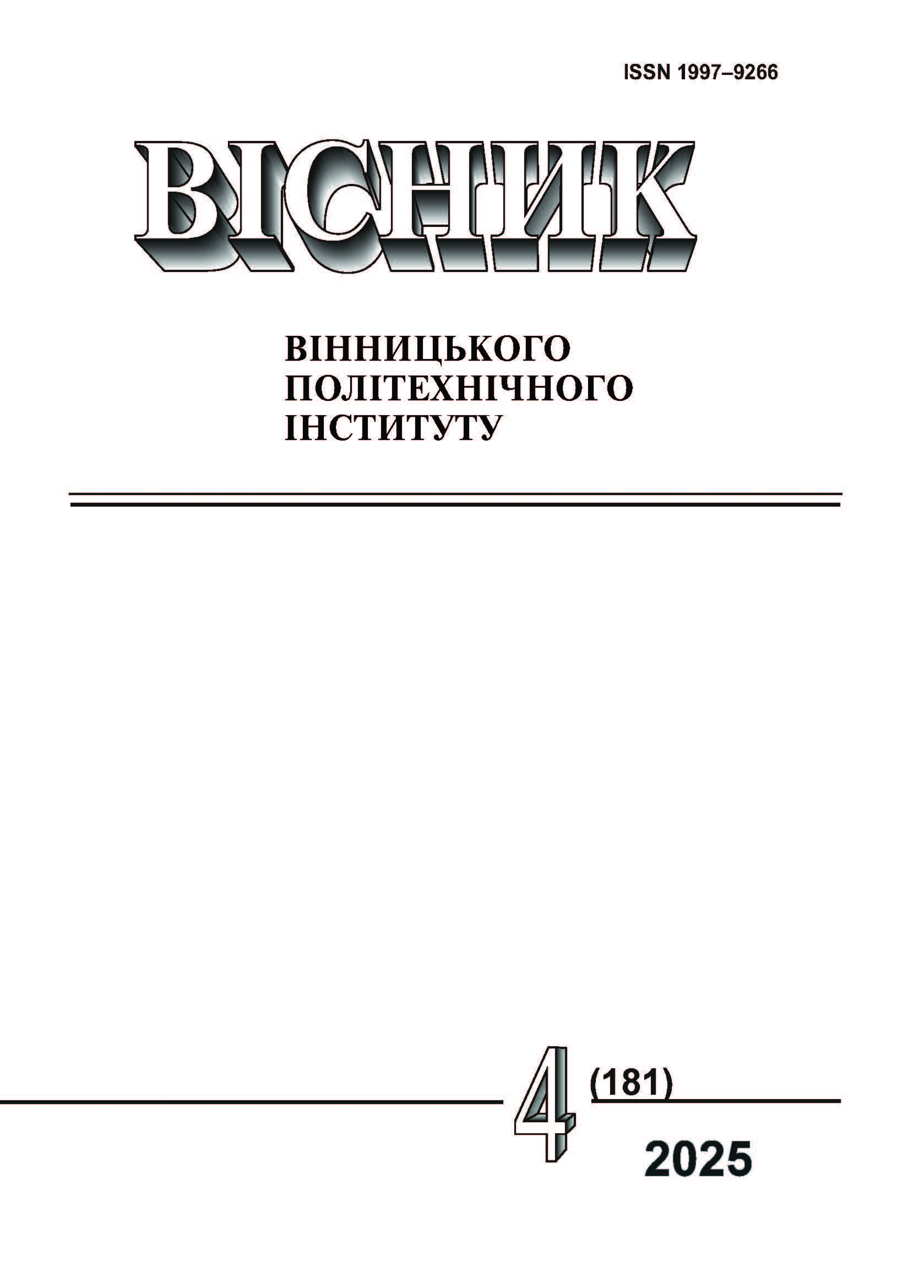Automation of the Use of Natural Language Queries for Comprehensive Analysis of the State of Surface Waters in the Southern Bug River Basin
DOI:
https://doi.org/10.31649/1997-9266-2025-181-4-118-125Keywords:
geographic information systems, water monitoring, large language models, adaptive parsing, data analysisAbstract
The article considers a modern approach to a comprehensive analysis of the state of surface waters in the Southern Bug River basin by integrating digital technologies necessary for the automation of natural language queries. The basis of the proposed approach is the synergy of geographic information systems (GIS), intelligent data processing tools, adaptive parsing of large arrays of monitoring information and artificial intelligence algorithms - in particular, large language models. Considerable attention is paid to the automation of the processes of collection, pre-processing, structuring and visualization of environmental data, which ensures high-quality preparation of the information environment for making management decisions. The developed approach allows for a spatio-temporal analysis of the state of water resources, identification of key pollution trends and a comprehensive analysis of the state of surface waters in the Southern Bug basin by using natural language queries. The approach was tested within the framework of the implementation of a web system on real data for monitoring the state of surface waters of the Southern Bug basin and the successful testing of this system in the direction of correct processing of natural language queries.
The use of large language models for the analysis of the state of surface waters significantly simplifies the process of forming various environmental reports, quality classifications and solving other applied problems of analyzing data on the state of surface waters monitoring.
The results obtained emphasize the feasibility of creating flexible information systems for monitoring the state of surface waters, which combine the capabilities of spatial analysis, natural language processing and machine learning. This allows for making informed management decisions and promptly responding to changes in the environmental state. The proposed approach can be adapted to other water basins or sub-basins, opening up new opportunities for sustainable management of natural resources.
References
H. Zhang, “AI and Big Data in Water Environments,” ACS ES&T Water, vol. 2, issue 6, pp. 904-906, 2022. https://doi.org/10.1021/acsestwater.2c00203 .
D. B. Olawade, et al., “Artificial intelligence in environmental monitoring: Advancements, challenges, and future directions,” Hygiene and Environmental Health Advances, vol. 12, 100114, 2024. https://doi.org/10.1016/j.heha.2024.100114 .
В. Б. Мокін, М. А. Гораш, Є. М. Крижановський, і Т. Є. Вуж, «Інформаційна інтелектуальна технологія автоматизованої геоприв’язки екологічної текстової природно-мовної інформації,» Наукові праці ВНТУ, № 4, 2022. [Електронний ресурс]. Режим доступу: https://praci.vntu.edu.ua/index.php/praci/article/view/624 .
European Environment Agency. Europe’s State of Water 2024: The need for improved water resilience. EEA Report no. 07/2024. [Online]. Available: https://www.eea.europa.eu/en/analysis/publications/europes-state-of-water-2024 .
M. Landt-Hayen, et al., “A climate index collection based on model data,” Environmental Data Science, vol. 2, pp. 1-13, 2023. https://doi.org/10.1017/eds.2023.5 .
Кабінет Міністрів України. Постанова від 19 вересня 2018 р. № 758 (зі змінами № 1071 від 06.09.2024) «Про затвердження порядку здійснення державного моніторингу вод». [Електронний ресурс]. Режим доступу: https://zakon.rada.gov.ua/laws/show/1071-2024-%D0%BF#n25 .
Веб-система «Моніторинг та екологічна оцінка водних ресурсів України». 2024. [Електронний ресурс]. Режим доступу: http://monitoring.davr.gov.ua/EcoWaterMon/GDKMap/Index .
C. Kermorvant, et al., “Understanding links between water-quality variables and nitrate concentration in freshwater streams using high-frequency sensor data,” Plos one, vol. 18, issue 6, e0287640, 2023. https://doi.org/10.1371/journal.pone.0287640 .
В. Б. Мокін, Є. М. Крижановський, і М. П. Боцула, Інформаційна технологія інтегрування математичних моделей у геоінформаційні системи моніторингу поверхневих вод, моногр. Вінниця, Україна: ВНТУ, 2011. [Електронний ресурс]. Режим доступу: https://ir.lib.vntu.edu.ua/bitstream/handle/123456789/1943/Mokin_ITIntegrMatModelUGeoinformSistMonitPoverhVod394.pdf?sequence=1&isAllowed=y .
Y. Tian, et al., “Advancing Large Language Models for Spatiotemporal and Semantic Association Mining of Similar Environmental Events,” Transactions in GIS, vol. 29, e13282, 2025. https://doi.org/10.1111/tgis.13282 .
Downloads
-
pdf (Українська)
Downloads: 33
Published
How to Cite
Issue
Section
License

This work is licensed under a Creative Commons Attribution 4.0 International License.
Authors who publish with this journal agree to the following terms:
- Authors retain copyright and grant the journal right of first publication.
- Authors are able to enter into separate, additional contractual arrangements for the non-exclusive distribution of the journal's published version of the work (e.g., post it to an institutional repository or publish it in a book), with an acknowledgment of its initial publication in this journal.
- Authors are permitted and encouraged to post their work online (e.g., in institutional repositories or on their website) prior to and during the submission process, as it can lead to productive exchanges, as well as earlier and greater citation of published work (See The Effect of Open Access).





